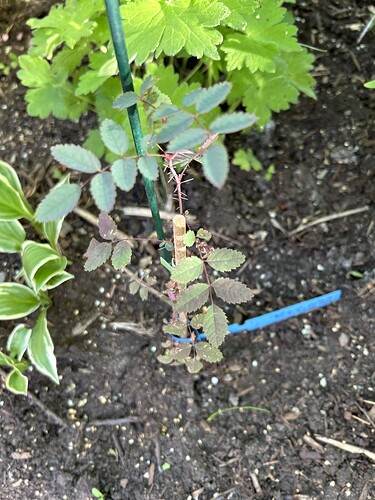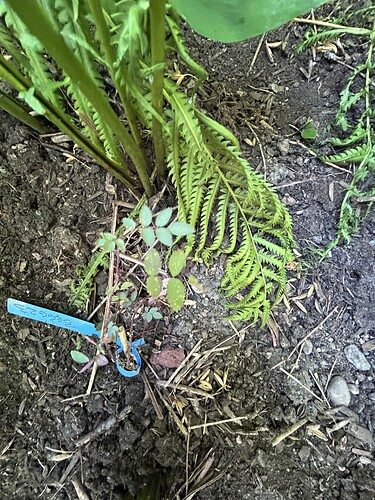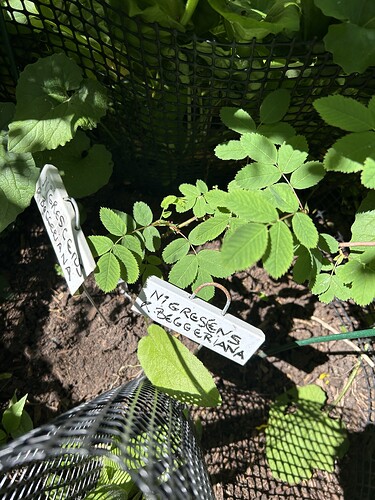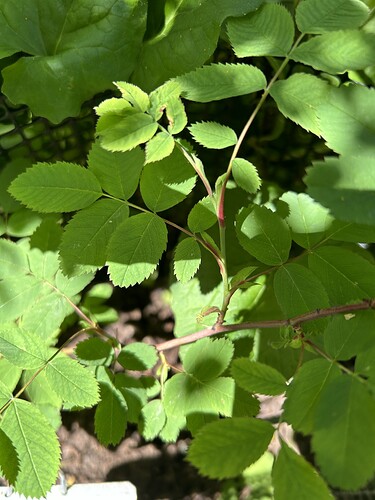June 27 Edit only for “correctness”
Excellent info (the only l know of in public domain) on your experience with polstjarnan and cross breeding while trying to retain hardiness - big txs for sharing. Found little on breeding with it in the past.
As to Polst. hardiness, what l noticed with it is every 5-7 years they will go for a massive die back - even this spring. Prune and they come back to 8-12 ft (1.5 to ~ 3 m). Next pollinating campaign l am getting fly fishing tying glasses as eye strain was very high for me (tiny flowers).
My experience in breeding was stopped, so far, at failed germination mainly with lykkefund and helenae hybrids ( multiflora).
Chose them to get less prickles, continue florets with maybe tinge of yellow … but both not the slightest bit hardy for Zone 4 Canada. If Polst. doesn’t pass hardiness l should consider myself lucky to have failed.
As to access to “standard” white beggeriana, l couldn’t find anywhere on the market, but a rose friend sent Alberta province beggeriana botanical garden seed that l had incredible luck with this spring with a couple dozen germinated. The rose friend has rose friends in Iceland - you might know the person l believe.
Survivors of spring hardening off planted and they produced glaucous leaf color on some. Cross pollination (there all OPs) a possibility for seedlings but if they turnout winter hardy … l don’t care in my world.
A “Long Word” about beggeriana nigrescens (pink version) in part thanks to the excellent assistance of Stefan’s expertise, that encompasses help/inputs on hybridizing/crossing, rosa technical, genetics, rose history (including cold zones) etc that continues to be of help to those starting out - for me over about 15-20 years on rose forums.
Referred me to “Floral of China” V9 quote on “rare pink version in the 1900’s Schenk’s description of the “white” version of the R beggeriana “nigrescens”. I can’t rational calling it nigrescens unless it’s for leaves or hips final color.
The pink version is not recognized (doubted by HMF) - as only detailed info about white version - HMF may have not seen historical mention of rare pink version neither does it show a photo of the white nigrescens.
Loubert - France did carry it and Rosenposten where l obtained Lovisa, did list it 4 years ago.
My small ones are runners from the only N/A one l know of ( in Canada) and were completely hardy last year.
The pink version flower form is as clusters to my eye and produces final black hips. Final “black” hip color as per CDN owner personal comm… Loubert source site shows red hips yesterday - ?not final color of ripening? Though l imagine dark purple red final may look black.
Only perplexing things for me are, when compared to my “very young standard white beggeriana” seedlings is the former have glaucous leaves and thorny, while the nigrescens runners have smooth cane except for thorns at base of stipule and leaves that are not glacous.
Anyways l take note of one of Karl’s last written comments on beggeriana … went something like “beggeriana is a natural history mystery to me that’s very difficult to sort out”.
I am told also in Canada CFIA has changed the rules and plants by private can only be exported out through a nursery - yeah good luck with that commercial money priority please, export barrier.
Good luck on getting white or pink beggeriana nigrescens.
Riku



